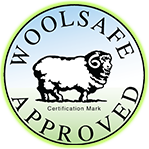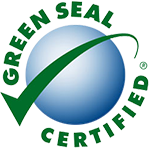As one of the Expert Carpet Cleaners in Phoenix we will try to give you information on each type of fabric and what we have seen in our years of carpet cleaning experience in Arizona, so that you can be sure you are choosing the right carpet for your home.
Choosing the right Carpet- Importance of Fiber
Whether you are looking at redecorating or just looking to change out what you have in the bedrooms, it is important to be well informed in order to make a wise investment when purchasing carpet. Choosing the right carpet is not an easy task. You have so many color options, pile densities, fiber construction, and fiber options, it is enough to make your head spin. Now, I would not assume to tell you whether to have a beber or a plush, a patterned piece or a frieze, or what color to choose, these are all a matter of preference. Choosing the right carpet goes much deeper than that. My job as your carpets lifetime care and maintenance provider is to help you choose the best fiber for your homes particular situation.
***A disclaimer before I begin – you can easily google “Mohawk or shaw carpet fiber types” and receive a list of fiber types and how they perform (Links can be found at the bottom for those interested), but I warn heavily against trusting what the person selling you the carpet tells you and recommend instead that you trust someone who has the job of keeping the piece looking beautiful for the years to come.***
Choosing the right Carpet – Wool and other Natural Fibers
Wool is a fantastic fiber that will last for a long time (the Pazyrk Carpet has been around since give or take 400 B.C.). On the positives, it is a natural fiber that is opaque (light doesn’t pass through it) so it has certain positive abrasion resistance qualities, it is naturally fire retardant, it comes from an easily renewable source (sheep mostly) and tends to be naturally anti allergenic. The negative, however, is that wool is extremely absorbent (will hold up to 70% of its own weight in water when saturated) which can be slightly negated with a good application of Teflon or fabric protector. It can be a natural feeding ground for mold and mildew to develop and thrive. Being so absorbent means that it has to be cleaned using delicate cleaning agents as the stronger ones can soak in to quickly and damage the fiber, limiting what “stains” can be treated and removed. Last, but not least, coming from an animal, it can only be made as a “staple” product, which simply means it will fuzz and lose fabric throughout the course of its life because sheep do not grow infinitely long hair, that can only be achieved with synthetic fibers.
The ARIZONA factor – Wool is extremely sensitive to sunlight and in our hot desert, any part exposed to constant/repeated exposure will fade and dry rot fairly quickly. If not regularly maintained, Arizona dust can scar the carpet resulting in permanent traffic areas.
The “other natural fibers” such as cotton, rayon (not really natural but we will call it so for what we are concerned), and silk share all the negatives that wool has, while also being more expensive, heat sensitive, water sensitive, while having almost none of the positives. If you install silk carpet wall to wall, you are just asking for hefty maintenance bills.
Choosing the right Carpet – Nylon
Nylon comes in two major types, dyed after manufactured, and dyed as it was manufactured. This is important because you will pay more for the second, but get a much better quality carpet if you do. Commonly known as “solution dyed nylon” or “nylon 6,6”, this product is the same color all the way through. Think of it as the difference between a carrot and a radish. The radish is the cheaper nylon, dyed red after it was made white. The carrot, that started out as plastic nylon beads, that had orange beads added, then melted down and made into the orange carrot you see now, orange all the way through. The positives of Nylon 6,6 is that it has decent stain resistance (especially when it is made with a Teflon applied), it has very good cleanability, meaning we can use numerous spotting agents and cleaning processes to remove the “stain” or soil, it holds up to the sunlight fantastically (often the carpet backing will dry rot before the nylon 6,6 starts to fade), and, when made from a bulk continuous filament (the infinitely long strands that sheep fail to produce), it does not shed or fuzz very much. The negatives are not so bad, all nylon are “transparent” (on a near microscopic level) meaning they can be a little sensitive to abrasion, cheap nylon will fade, fuzz and wear out quickly but the nylon 6,6 is pretty close to perfect.
The ARIZONA factor – Nylon 6,6 is my preferred fiber for the valley of the sun. Its only real downfall is that if you absolutely refuse to vacuum regularly (I recommend at least twice a week) your carpet is going to have a short life as our dust and grit will literally scratch it to death.
Choosing the right Carpet – PET (Polyester)
Not many of the synthetic carpets look more luxurious on the first day after install than Polyester. It has a certain luster, a shine that is unmatched. Positives include decent stain resistance (nearly impossible to stain with water based spills and oil based spills can be mitigated with a good teflon), good cleanability as a multitude of products are safe to use on it, and fantastic color resiliency (it is produced similarly to nylon 6,6). The drawback to polyester can be quite steep. It has similar abrasion issues as nylon while having almost no physical resiliency, you can literally crush it in major walkways causing clean carpets to have irregular lines and patterns running through them. PET is generally “oil loving” and tends to absorb oil based spills at an alarming rate (leading to permanent staining) things such as oil based paints and salad dressing can be at times dangerous for this fabric. The bright sheen that attracted you to it in the first place can eventually be its downfall, because when it has a crush spot, abrasion, or an oil stain, you will notice very quickly due to the carpets high shine.
The ARIZONA factor – Due to having similar needs for frequent vacuuming, while being unable to stand heavy traffic load, unless you are putting this fiber into a low trafficked bedroom, or you just want shiny carpet, nylon is the better option.
Choosing the right Carpet – PTT (Triexta Polyester)
This fabric has some pretty intriguing qualities and is being sold like hotcakes as it is priced reasonably affordable. I want to point out that Mohawk and Shaw both manufacture/sell PTT under different names (Shaw=Corterra circa 2001, Mohawk=Smartstrand circa 2008). I find it interesting that Shaw speaks to how I have seen it clean opposed to how Mohawk does nothing but talk it up. The positives are pretty incredible, it resists staining remarkably well, it holds its color well in the sun, fantastic cleanability (“anything under the kitchen sink” from a professionals stand point), and low absorption means drier carpets faster after cleaning. That’s great, fantastic really, but it does have a few negatives. It does not have any topical Teflon applied, now this should not be an issue, but stay with me, it has the same high oil based absorption as PET, and when there is no topical to fend off the oil it can make maintenance very difficult for you. The second, and more important factor is it seemingly has a very poor abrasion resistance. Traffic areas in homes are quickly filled with dirt free, grease free, rub a snow white towel on it after cleaning to prove it is 100% grime free traffic areas. This is caused by abrasion scarring the fabric so that when our eyes perceive the color bouncing back, it has been distorted to show a mess of colors (resulting in black to gray appearance).
The ARIZONA factor – The two biggest culprits to dirty, dingy, destroyed carpet in The Valley of the Sun are Dry Soil (the desert dust settling on your carpet), and Grease from our parking lots (intensified here because we so seldom see rain to clean them) are the two absolute worst things for this fiber…that’s not a good thing…at all. Unless you are willing to vacuum very regularly (again, minimum twice a week) and never wear your shoes in the house (barefoot is just as bad from an oil producing perspective by the way), this is a horrific choice of carpet.
Choosing the right Carpet – Olefin (Polypropylene)
Olefin has been around for a while, it has some very good qualities but is not generally recommended for long term use. The positives are that it is nearly water proof, so water based stains are no worries, it holds its color extremely well, and is able to be effectively cleaned with almost anything. The downside of Olefin are short and sweet, it loves oil, sucks it up like crazy. This product can be cleaned by the greatest product, leave absolutely no residue, and in three months, be filthy dirty looking again. Why? Because it will literally absorb oil out of the air (pollution is a great thing, no?). Often if it does not have human/animals living on it, the oil show as a yellow tinge that can be cleaned magnificently by a trained professional, but the constant maintenance often limits this products usability.
The ARIZONA factor – This fiber type works well in the right setting. Daycares and young children’s play areas that should be frequently cleaned for health concerns are great, bright colored drinks won’t hurt it. It does suffer from some abrasion issues but with the frequent cleaning required to keep it looking good, it tends to balance out. Unless you like to see us quarterly (or more depending on amount of traffic) I would only recommend this in those areas your kiddos will be spilling sippee cups on if at all.
Links for additional research
http://shawfloors.com/tips-trends/luxurious-carpet/carpet-fibers
http://www.mohawkflooring.com/flooring-guide/carpet-guide/carpet-fibers.aspx






